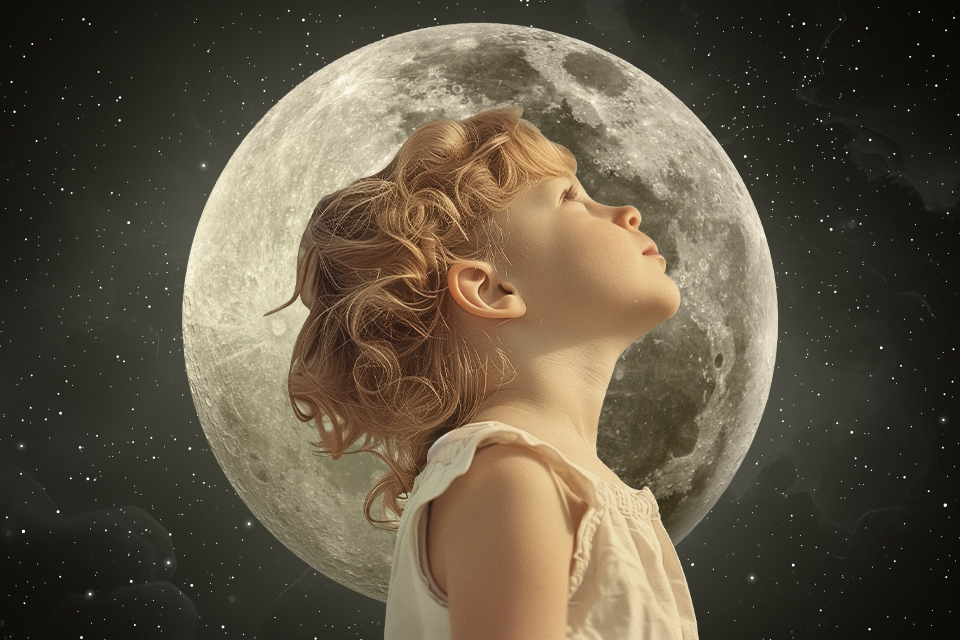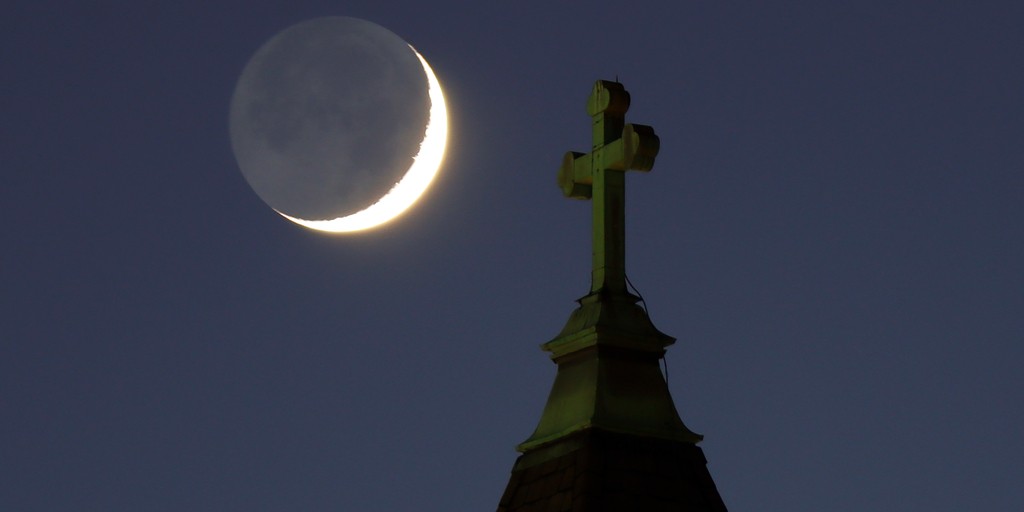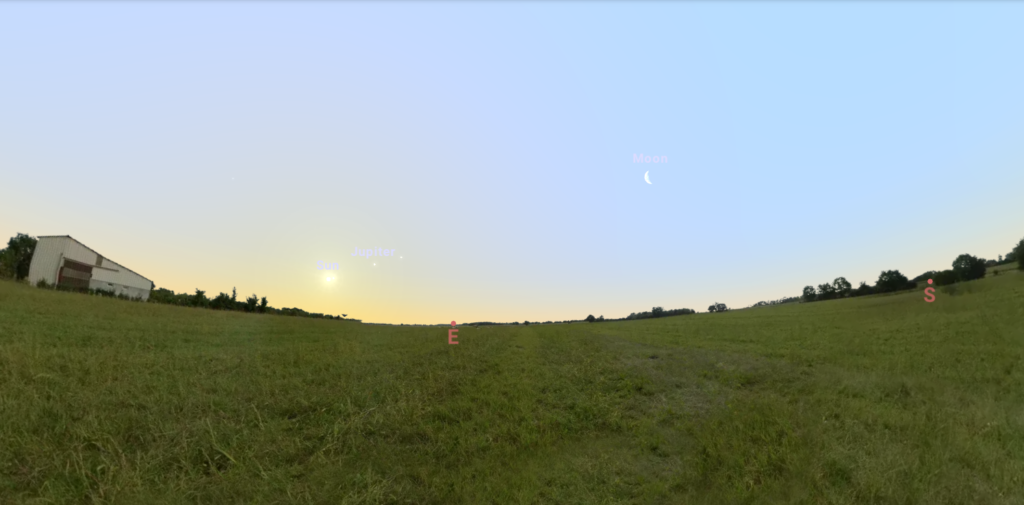The Moon is a celestial body that is easiest to observe at night in favorable weather. It is the best candidate for introducing astronomy to a child. However, the behavior of our natural satellite is sometimes difficult to understand even for adults. Here are a few things about it that you should know yourself and tell your child so that they know how the universe around us works.

The Moon is the same body, no matter what it looks like
The first thing you should explain to your child about the Moon is that no matter what it looks like in the sky, it is the same celestial body. It’s just that the Sun illuminates it differently, so we see either a thin crescent or a full moon.
Conventionally, the cycle begins with the phase of the new Moon, when it is almost invisible because it is turned to us with its side opposite to the one illuminated by the Sun. Gradually, the thin crescent at the edge of the moon becomes wider as we approach the first quarter.
This is the best time to try to show your child that the Moon really always remains a sphere. After all, it is at this time that its disk can be seen completely in the form of a barely visible “ghost”.

Da Vinci’s glow demonstrates that the Moon always remains round. Source: www.foxweather.com
This is the so-called da Vinci’s glow, or the ashen light of the Moon. It arises because our Earth also reflects a large part of the sunlight falling on it into space. It is enough to cause thаt “Moon ghost”.
Then the Moon slowly begins to turn into half a disk, then grows even larger, and a full moon occurs. After it, darkness begins to grow on the side where the crescent used to be, gradually the Moon turns back into a half, then becomes old and finally disappears, and a new cycle begins.
What phase of the moon is it now?
It should be remembered that one full cycle of the moon’s phases lasts on average 29.53 days. To help your child understand their sequence, you should watch them all. That is, you need to be prepared to regularly pay attention to what is happening in the sky for several weeks.

You’re more likely to find yourself in the middle of the cycle rather than the beginning. And while it’s not hard to recognize a full moon, it can be difficult to tell which way the new and old moons are facing.

There is a simple rule that you should remember and tell your child. If you can put a stick to the “horns” of our satellite, turning it into the letter “P”, then it is just a «Pupil of the fool Moon”, i.e. still young. If it resembles the letter “C”, it is “Ceasing”, so it is old.

However, all this is true only if you are in Ukraine, or at least in the Northern Hemisphere. In the Southern Hemisphere, everything is exactly the opposite. The letter “P” is the old Moon (“Perishing”), and “C” is the new Moon (“Coming”). At the equator, the haze generally grows from the top, and decreases as it ages downward.
The Moon always faces us with one side
Another important thing about the Moon that should be explained to a child is that, despite all the phase changes, it always remains facing the Earth with the same side. You can explain this to your child by observing it during the week before and week after the full moon. During this time, you can clearly see that although the shadow moves across the moon’s disk, craters, seas, and other landforms remain in their places.
At the same time, you can tell your child that the boundary between the illuminated and shadowed parts of the lunar disk is called the terminator. It has nothing to do with the robot from the science fiction movie, the name is derived from the Latin word meaning “to stop” or “to limit”. By the way, when the terminator passes through the surface details, it is clearly visible that our satellite is not a smooth ball, but has mountains and depressions.
At the same time, it is incorrect to say that the Moon does not rotate on its own axis. It does, but this process, due to the Earth’s tidal forces, occurs synchronously with the movement in the orbit, which is an ellipse close enough to a circle.
The “horns” of the Moon
The most difficult part of explaining the phases of the moon concerns the popular belief that if you can hang a bucket on its “horn” it will not rain, but if they are turned down, expect heavy rain. We can say right away that there is no connection between the orientation of the crescent and the weather.
In addition to the latitude of the Earth at which the satellite is observed, the season and the moment at which you see it also affect where the “horns” of our satellite are directed.
If you are traveling from Ukraine towards the equator, the more often the “horns” of the young Moon will tell you that “it will rain”, and the old Moon will tell you that it will be dry. At the moment you reach this imaginary line equidistant from the poles, this situation will always be observed.

All this is due to the fact that the Moon’s orbit is inclined to the ecliptic plane at an angle of approximately 5 degrees. In turn, the Earth’s equator is also inclined to the ecliptic plane. Because of this, the Sun can illuminate the Moon at different angles relative to the Earth’s horizon.
In general, in the Northern Hemisphere, the new moon, when it rises, “portends rain”, when it sets, it “portends dry weather”, and its forecast when it is directly overhead is open to debate. With the old moon, it’s exactly the opposite. When it rises, you can hang a bucket on it, but not when it sets.
All this also depends on the season. In winter, the Moon rises higher, so its “horns” change their orientation very abruptly as it travels across the sky. In summer, the angle between its trajectory and the horizon decreases, and the “horns” stick out rather vaguely to the side most of the time.
If all of this seems too complicated for you, there is a simpler explanation that will be quite suitable for your child. The Moon’s “horns” always point in the direction opposite to the Sun. Even when it is below the horizon, i.e. at night, the Moon’s crescent always tells us about the position of our luminary, not about the upcoming weather.

